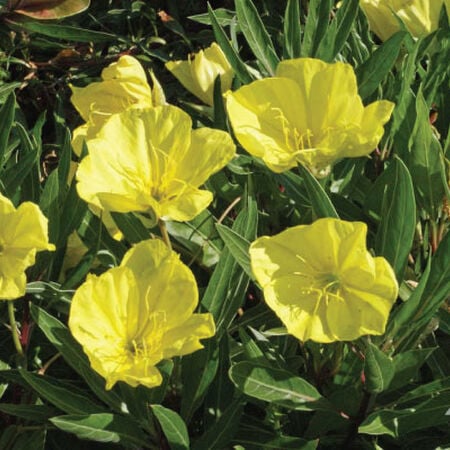Evening, Primrose Seeds
Key Attributes
Key Attributes
Product Details
Weight
0.01Depth
0.1Height
4.5Width
3.25Plant Height
3-5'Botanical Name
Oenothera lamarckianaSeed Type
SeedAdditional Characteristics
Attracts Pollinators, Extended BloomsSeeds Per Gram
2,100Seeds Per Pound
2,100Packet
500 SeedsSow Depth
1/16"Seeds Per Ounce
59,500Breed
Open-pollinatedSun
Partial ShadeLife Cycle
AnnualSow Method
TransplantCategories
FlowersDays To Maturity (# Days)
75Components
Growing Instructions
![]() Learning Download: How to Grow Primrose
Learning Download: How to Grow Primrose
Primroses are frequent additions to gardens, as border or in containers. Primroses prefer woodland conditions, such as damp areas.
Before Planting: Begin primroses inside in the wintertime. Sprinkle the seeds in trays and cover them lightly with soil or vermiculture. Then, place the trays in a plastic bag and place in freezer for two weeks. Remove from the freezer, poke holes in the bag and place it near a north-facing window. Two weeks later, move the tray to a south-facing window.
Planting: Once the primroses have their second or third true set of leaves, transplant them outside. When planting outside, space the plants 6 to 12 inches apart.
Watering: Water the primroses weekly, sometimes even more frequently if there is a period of drought, but begin to water less frequently when fall arrives.
Fertilizer: Begin fertilizing when the plants begin to blooms and use a water-soluble or liquid high-bloom fertilizer low in nitrogen. After you begin the process, reapply the fertilizer monthly as long as the primroses are in bloom.
Days to Maturity: Primroses bloom in the early spring and last throughout summer.
Harvesting: Primroses do not make a great bouquet flower.
Tips: Continuously prune out dead leaves or blooms, and this will prolong the primroses; blooming period.
Shipping Schedule
Our Seed Promise
 "Agriculture and seeds" provide the basis upon which our lives depend. We must protect this foundation as a safe and genetically stable source for future generations. For the benefit of all farmers, gardeners and consumers who want an alternative, we pledge that we do not knowingly buy or sell genetically engineered seeds or plants.
"Agriculture and seeds" provide the basis upon which our lives depend. We must protect this foundation as a safe and genetically stable source for future generations. For the benefit of all farmers, gardeners and consumers who want an alternative, we pledge that we do not knowingly buy or sell genetically engineered seeds or plants.
The mechanical transfer of genetic material outside of natural reproductive methods and between genera, families or kingdoms, poses great biological risks as well as economic, political, and cultural threats. We feel that genetically engineered varieties have been insufficiently tested prior to public release. More research and testing is necessary to further assess the potential risks of genetically engineered seeds. Further, we wish to support agricultural progress that leads to healthier soils, to genetically diverse agricultural ecosystems, and ultimately to healthy people and communities.
To learn more about the "Safe Seed Pledge" please visit www.councilforresponsiblegenetics.org.

